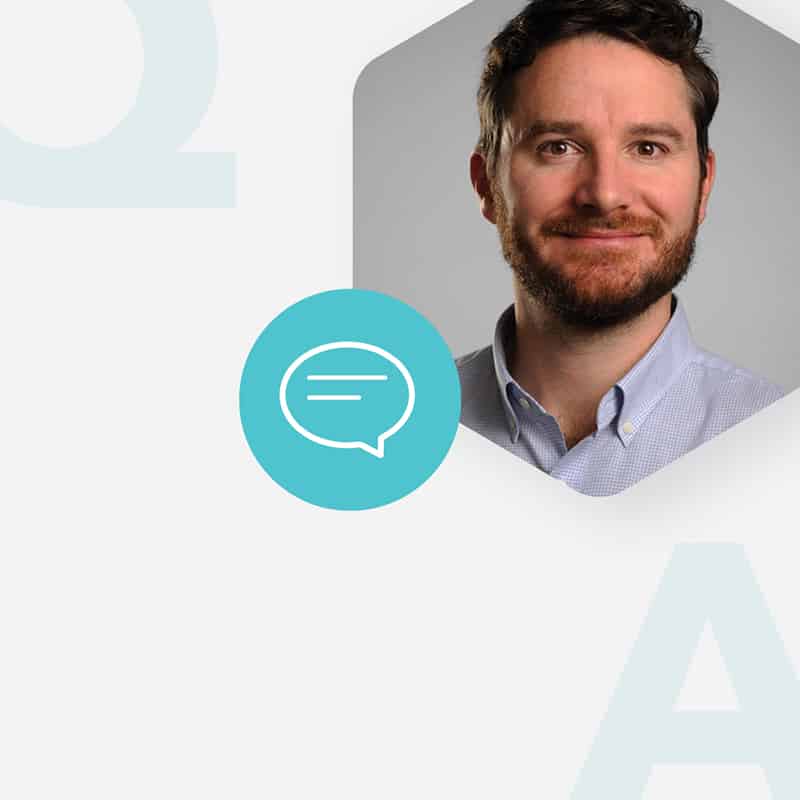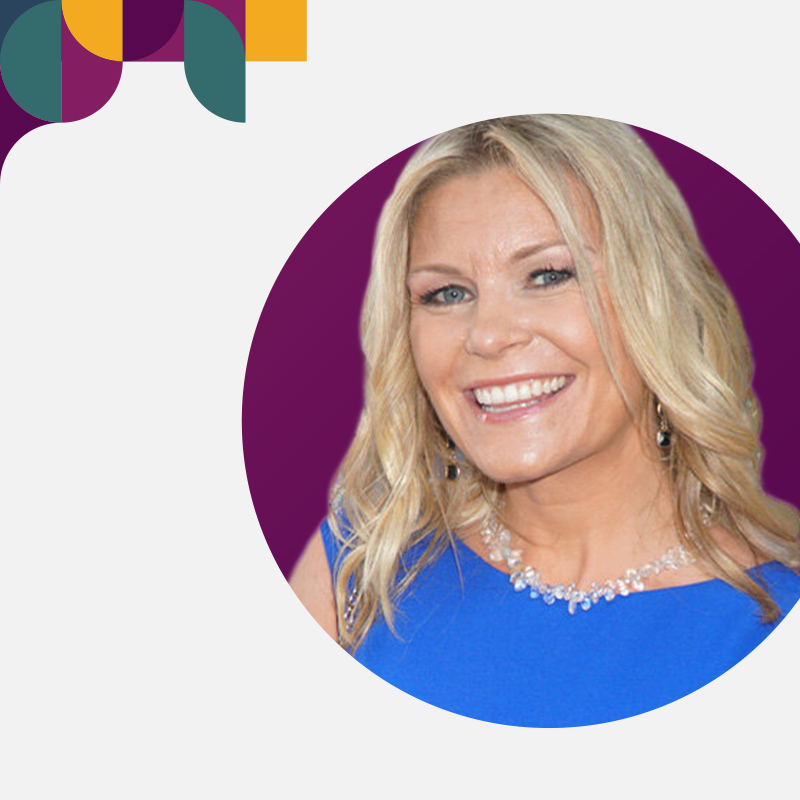Arnaud Grunwald is the chief product officer at Betterworks. He was the co-founder and CEO of Hyphen, an employee listening and engagement platform that was acquired by Betterworks in 2020. In his current role, Arnaud is responsible for leading product innovation and development.
The master builder of Betterworks product innovation and roadmaps, Arnaud recently shared his insights about business trends, performance management, and working as a DJ.
Q: How did Hyphen come to be acquired by Betterworks?
A: During a potential partnership conversation with Betterworks, I met Doug (Dennerline) and we hit it off. It was becoming obvious in the market that performance management and employee engagement had to be tied at the hip. It’s been studied and proven that high employee engagement drives better individual, team, and company performance, but good performance management also drives employee engagement — they go hand in hand. Betterworks had planned to develop something in-house to measure employee engagement, and when they saw what we had built at Hyphen, it made sense to consider a merger. That happened in February 2020 two weeks before the pandemic shut down everything. I got to go to our Redwood City office for two weeks, before we were all sent home.
Q: When you’re developing the product roadmap, how do you balance the customers’ needs with market trends and needs?
A: We start with building a vision, based on a detailed analysis of where the market is heading, the biggest pain points for our “ideal customer profile-type” of companies, and especially where the competition fails to deliver great solutions. The key themes of our roadmap are aligned with this long-term vision. But we are also very customer-centric and get a lot of input from our customers about their challenges and what they’re looking to do better or differently in the existing solution. That also contributes to the roadmap. So, we’re listening to the market, customers, and prospective customers, all of which informs the near-term product roadmap and the long-term vision. All in all, we receive a lot of fantastic input and have many prioritization discussions with internal and external stakeholders. It’s really part art and part science!
Q: What are some of the biggest trends you’re seeing in the world of work?
A: There are four main trends I see currently. First, everything has become more employee-focused — the rise of employee engagement and importance of the employee experience. Second, everything is now digitalized, and so things happen 10 times faster. Teams are agile. Communications are instantaneous. Third, we have a talent shortage. Companies are trying to keep their talent and understand the skills that their employees have and need. The fourth trend is hybrid and remote work.
When you put all this together, it makes for a very challenging time for the world of work where employees have a lot to do. They don’t know if or how they’ll fit into their employer’s future plans. And, communications are more complex because they are taking place asynchronously and remotely, which requires employees to use a lot of tools. Employees are expecting managers to coach them, not to be task oriented. So, managers are challenged to collect all the information they need to have the right conversations with their team members.
Meanwhile, the performance management process hasn’t changed that much in the past 20 years. Companies still fall back on the traditional ‘set and forget’ approach where they realize at the end of the year that goals haven’t been met and no feedback has been given along the way.
Q: How is Betterworks helping alleviate this problem?
A: We believe in a process that’s more meaningful, where there is continuous progress, feedback, and conversations with employees about what’s in it for them so that they feel they’re being invested in.
To accomplish this and help employees feel like their development matters, you need a much more simple way to do performance management. That’s what we call performance management in the flow of work. This brings performance management activities into the tools that employees use every day. Making it easy drives employee adoption and continuous engagement with the tool.
This also requires using sophisticated analytics that enable HR business partners and managers to be better coaches by having the right conversations with employees.
Related Content: [webinar] Josh Bersin on Enabling Performance in the Flow of Work
Q: What do you mean by the “right” conversations?
A: It’s not that managers and HR don’t have conversations with employees, but they often don’t talk about the right things. They don’t have the right structure, cadence, and topics. With analytics, you look at the data in a consistent, structured way. This provides insights to HR and managers about what to talk about and when, who’s not completing their goals, who’s not learning new skills, who doesn’t feel like they have a future in the company, who’s at risk, and so on.
When you combine performance management in the flow of work with analytics that drive meaningful conversations, you have a virtuous cycle that works together. Adoption and engagement on one side and analytics on the other side.
Related content: Using Conversations to Drive OKR Dialogue Between Employees and Managers
Q: What’s on our roadmap in the near term?
A: One area of our roadmap is to continue strengthening our enterprise readiness — whether it’s scalability, configurability, diverse types of technical engines, or the accessibility of our front-end — to make sure that organizations know we are purpose-built for their needs. We are already the most enterprise-grade performance management point solution out there, but we owe it to our customers — many of them in the Fortune 500 — to keep improving.
We’re always working to make sure the user experience is as delightful as possible, brings value, and is lightweight for employees, managers, and HR.
The third area we’re continuously improving is our reporting and analytics capabilities, including delivering self-service reporting and analytics. This will give managers and HR professionals who want to slice and dice the data with their own filters, benchmarks, and comparisons the ability to self-serve and stay within the platform.
Last but of course not least is our investment in AI. We’re able to collect a lot of data and decipher it. This allows us to build sophisticated algorithms that simplify activities for employees and managers. Some examples include providing guidance on how to write better goals, give effective feedback, and write meaningful performance reviews.
“We’re always working to make sure the user experience is as delightful as possible, brings value, and is lightweight for employees, managers, and HR.”
Arnaud Grunwald, Chief Product Officer
Q: Many of the performance management technologies can look very similar. What should an organization look for in a partner?
A: There’s a lot of complexity in any software platform. To start, companies should decide what are the five most important capabilities they want. It might have to do with scalability if the company has thousands of employees or is growing quickly. Another consideration might be the relative importance of goals to conversations to calibration. Once determined, the next step would be to drill down into those five areas and do your due diligence in asking the right questions.
But the product is only half the story. Performance management is too important to be reduced to just a software product. Companies purchase new tools in order to roll out better and different programs and processes. Hence, the change management aspect is crucial. Any company that wants to implement a successful performance management program should ask potential partners about best practices, case studies, and being introduced to the provider’s customers to learn what worked well for them and what didn’t. Professional services are hugely important in helping with implementation, communication, training, adoption, and sustained engagement to make sure that employees, managers, and HR continue to maximize the value of their performance management program.
Related content: Performance Management Tips: Rules for Increasing Adoption
Q: With concerns about a recession, companies are starting to pull back on hiring and investments, one of which may be performance management. What is the opportunity cost of stepping back?
A: If a company had plans to revamp their performance management process, that means they have already identified crucial pain points and gaps that were harming the company and the bottom line. Those pain points are only going to get worse in difficult times. Here’s a little bit of unconventional wisdom: Accelerate your plans because a new performance management process is going to be a tool that actually helps you get through the tough times, and then come out with a stronger culture, stronger processes, and stronger managers in the long term.
In challenging markets, you need to take care of not only your best people, but all your people. That means having a sound goal-setting system that brings clarity and transparency throughout the organization and helps everyone row in the same direction to face these economic headwinds. It means having empowered managers who can reassure employees through frequent conversations in which they talk about the right topics so employees can continue to feel safe. In challenging periods, it’s important for employees to give each other feedback and celebrate successes, too. All of this is incredibly important.
Arnaud Grunwald
“In challenging markets, you need to take care of not only your best people, but all your people. That means having a sound goal-setting system that brings clarity and transparency throughout the organization and helps everyone row in the same direction to face these economic headwinds.
Q: What’s been the highlight of your role since you joined Betterworks in 2020?
A: The most fun has been building up the team. We started with three people and now it’s 15. It’s international. It’s diverse. And even though we’re remote, we have good communication and fun together. They all have great curiosity and are highly accountable, two traits that I consider essential for product managers and designers.
The other highlight has been being a part of an exciting sales cycle. I’m a business fighter and I love to win, so showing companies like Colgate-Palmolive why we’re the only solution that meets all their needs and then having them come aboard is really rewarding.
Q: What’s a fun fact about you?
A: I was a DJ for about 12 years while I was in school and into my early career. I started in France, and then DJed at UC Berkeley as well as clubs in San Francisco. It was mostly electronic music. I was really fond of DJing, but weirdly, when I stopped, I stopped listening to music. Now I enjoy spending time with friends and family. I have a two-year-old son, which is a really great age because he’s starting to speak and is developing his personality and a sense of humor. A different kind of fun!
Interested in learning more about how Betterworks can help you empower and engage your employees and managers to yield superior business results? View a recorded demo or request a personalized demo.


